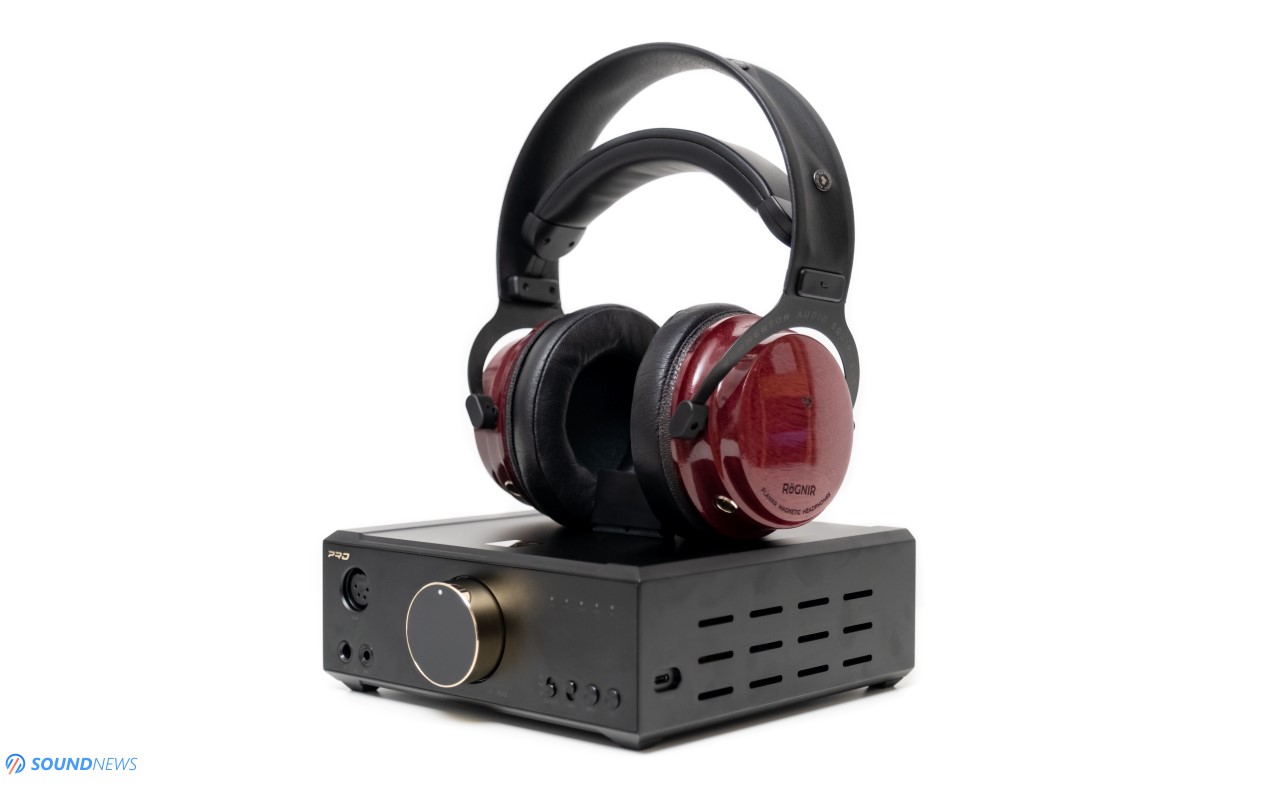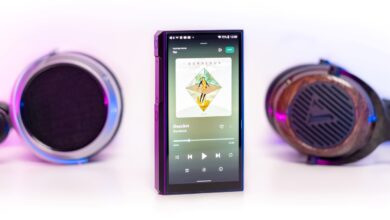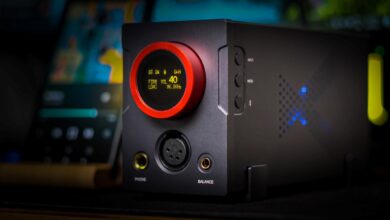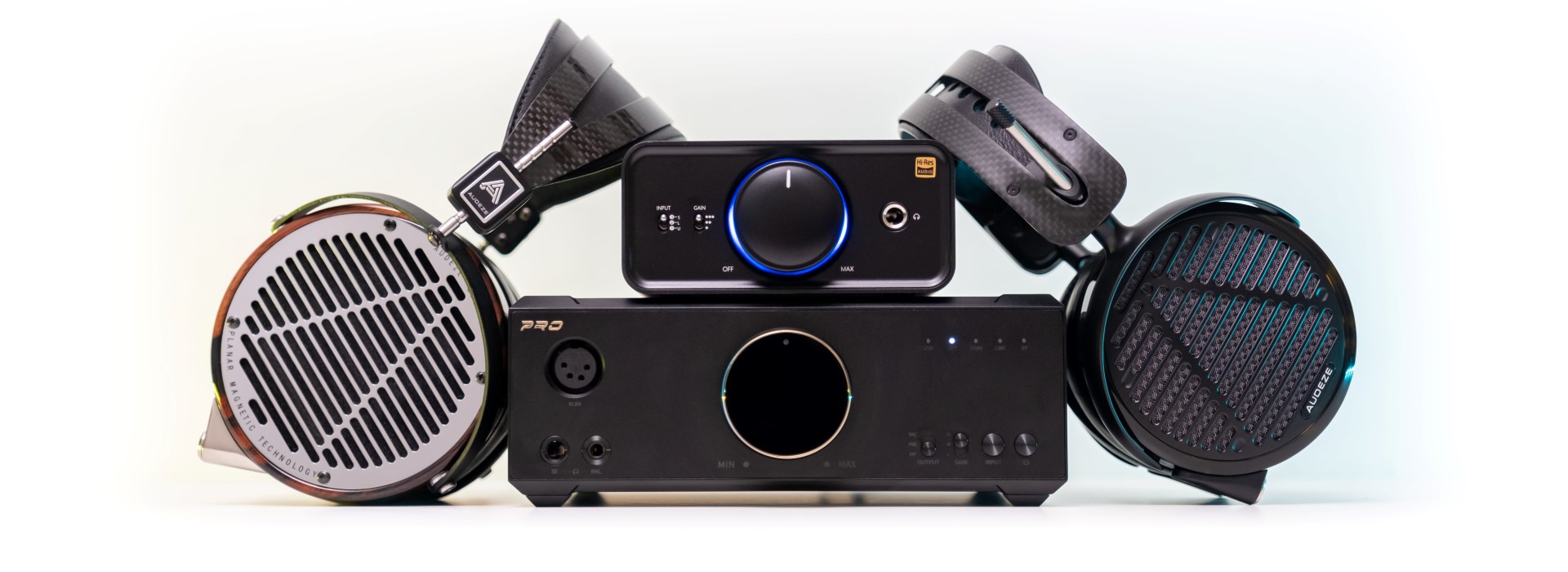
My Video Review:
A little over ten years ago, FiiO entered the entry level desktop DAC/Amp market. I clearly remember finishing a FiiO E09K review that left a bitter taste in my mouth, urging them developing higher performance combos, maybe even statement units that would compete with established manufacturers from all over the globe. When their K5 landed, I’ve sent another email explaining that portable market is only a small slice from a big pie…but somehow my words didn’t strike their mark up until K5 PRO review was published in 2019, learning about their future plans. Several desktop components were revealed to me, including a statement all-in-one that didn’t have a name at that time.
Two years passed and finally THX-AAA technology reached its peak, everybody was eager to embrace these distortion and noise-free modules that forever changed the way I’m looking at solid-state headphone amplifiers. After owning some of the best THX-AAA desktop headphone amps from the house of SMSL, Drop, including the Benchmark HPA4, a single wish remained unfulfilled. You can show me measurements of the best switching mode power supplies, these are staying even in the Benchmark HPA4 and AHB2 and in many other units, but when a linear transformer is filtering the incoming AC voltage, there is something happening with the final outcome, especially when it comes to dynamics that measurement couldn’t record. I’ve asked FiiO if there’s a possibility of adding a toroidal transformer to their statement unit that would improve dynamics, but especially the transient response of those THX-AAA modules and I’m extremely happy that my wish was granted with their K9 PRO.
I might be mistaken, but K9 PRO and Mytek’s Liberty THX-AAA are the only THX-equipped headphone amplifiers that are using toroidal transformers. I simply needed to try them, as hearing is believing as they say. I wanted to know if a different power supply implementation could improve a weaker bass delivery and a thinner midrange.
FiiO K9 PRO ESS Version is obviously so much more than a simple desktop headphone amplifier, there’s a top-grade DAC section too, a Bluetooth receiver is on board, an MQA renderer, it can work as a dedicated preamplifier, some basic features can be controlled by a smartphone app (which is pretty cool if you ask me), there is plenty of power under that hood and it was crafted in a fully balanced configuration. Before it, FiiO released a limited edition K9 PRO that used the flagship AKM silicon, featuring a single AK4499 DAC chip, however the unit that I’m testing today swapped it with two ESS 9038 PRO flagship silicon of ESS Technologies. Its PCB board was redesigned to retrofit the newest D/A converters, total harmonic distortion and crosstalk went down, while signal-to-noise ratio and power output went up, suggesting that the ESS version is the actual flagship unit of FiiO Electronics. K9 PRO ESS goes for $799 and I’ll be trying it out with an army of IEMs, portable over-ears, desktop dynamic and planar-magnetic headphones.

FiiO K9 PRO ESS Versus AKM version:
While they look almost the same, have a similar weight and build quality, on the inside things are quite different. Let’s have a look at them:
- As their names suggests, a single AK4499 replaced two ES9038 PRO DAC chips that subsequently improved the channel crosstalk and dynamic range. From 125 dB, SNR jumped to 129 dB and distortion went from 0.0003% to 0.00025% – which is impossible to detect in a real life scenario, but it’s nice to have nonetheless.
- Power went up by a little, from 2W to 2.1W on the ESS version
- There are 7 digital filters on the ESS version versus 6 on the AKM version
- AKM equipped units don’t have heat dissipation holes on its case, that would move hot air from within. ESS version has plenty of them and that’s the reason the amp stage could be driven a little higher, achieving a higher powerful output
- ESS version is more expensive as it uses two DAC chips, doubling the number of op-amps that are doing the I/V conversion stage
- Last but not least, AKM version uses a stainless-steel volume knob, while the ESS version an aluminum alloy one that was PVD coated with a layer of gold
There’s another difference that’s empowers their DAC chips. AKM version uses Velvet-Sound technology that adds some midrange presence, smoothing out the top octave, while ESS silicon chooses absolute transparency, a higher detail retrieval and an immaculate transient response. Sadly, at this point you can’t choose between the AKM or ESS version, as only the ESS version is being sold as I’m typing this.

Unboxing Experience
A box in a box is a usual sight with high-end electronics and FiiO went with the same winning formula. I was greeted by a quick start guide and by a huge warning sign that suggests choosing a 115V or 230V working voltage, before powering on the unit. Seeing and holding the unit for the first time was a revelatory experience, as it felt much bigger and heavier to their K5 PRO that looked like a toy near it. As usual, the unit itself was protected from all sides by thick layers of foam, so you can be sure that it will arrive safe and sound to your front door. To its right you’ll find a big accessory compartment that holds a power cable, a Bluetooth antenna, a USB Type-B cable so you can connect it to your PC/Mac, a headphone adapter, six rubber feet, a small fuse and a warranty card.
The coolest accessory FiiO included is a small desktop stand, so you can use it vertically saving precious desktop space, but I’m not sure if all units will be coming with this accessory at no additional costs. This is everything you’ll find inside its package, just connect it via USB with supplied cable and you’re ready to rock!
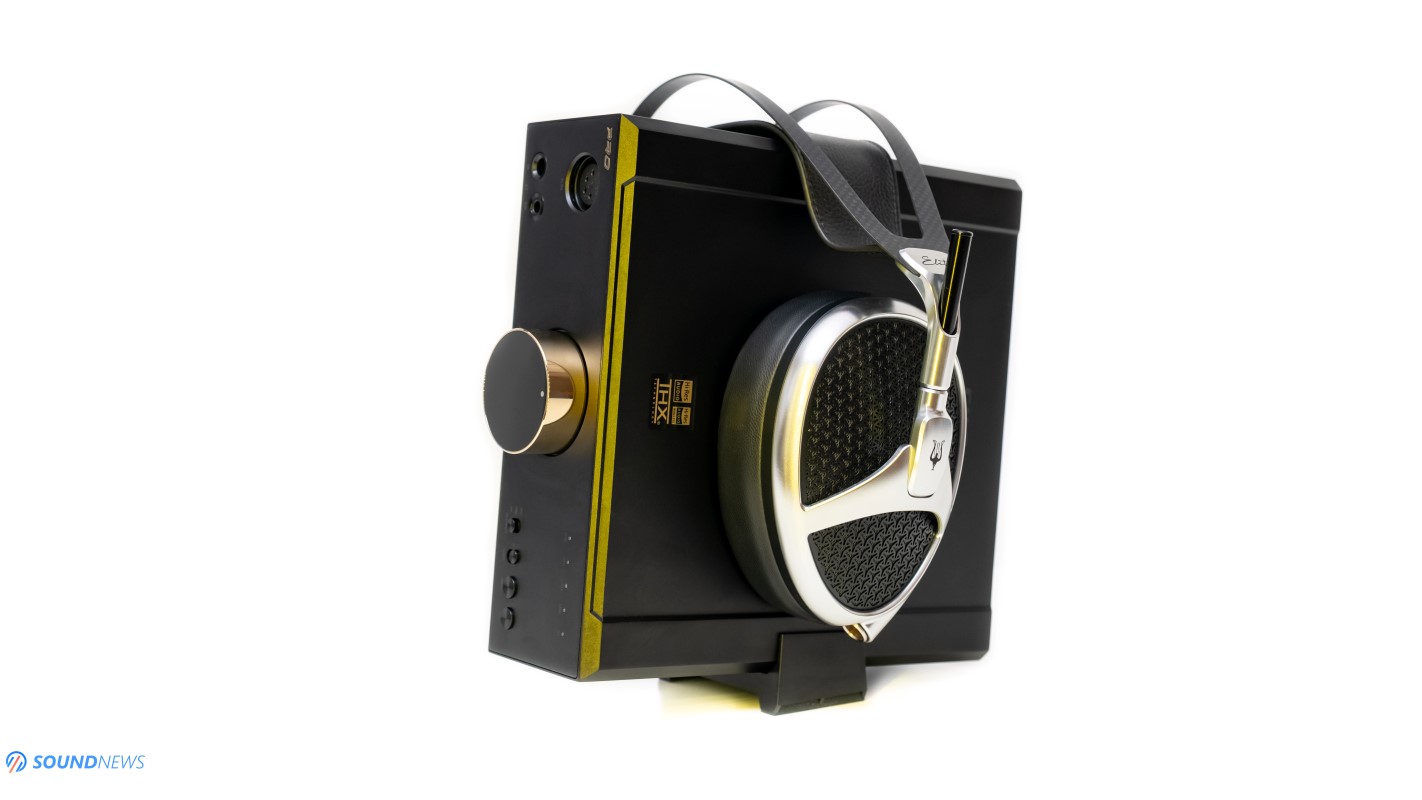
Design & Build Quality
I must say that I really dig its modern and bold looking case. This is a fully CNC-machined unit, on its back you can actually see the thickness of its case which added confidence that I’m dealing with a high-quality unit. I like that everything looks symmetrical, its volume knob sits exactly in the middle, it feels solid and you’ll need to apply a bigger force to rotate it compared to an entry level amplifier. Its frontal LEDs are tiny, I can barely see them in late night listening sessions as there is little to no light pollution. Two LEDs are surrounding its volume knob and you can increase or decrease their brightness using the FiiO Control Android/iOS app. Its buttons are carved from aluminum, I find them good looking, they aren’t wobbling at all and I cannot complain about them.
Compared to the AKM version, ESS units have heat dissipation holes on their sides that will protect its internal components and prolong their lives, which is a big plus in my book. Its case no longer follows the smooth and rounded lines of K5 and K5 PRO, it looks bolder now, suggesting that a wilder beast sleeps within. As FiiO describes it, K9 PRO looks like a unit you want to keep for longer periods of time, conceived it as a flagship unit from the very beginning.
If you look closer at its case, you can see that it was sandblasted with finer grains that added smoothness to the surface and an extra protection measure against scratches and accidental drops. By default, FiiO didn’t glue its rubber feet, as they let you choose using it horizontally or vertically, depending on your setup and available desktop space. I can use it in either mode, but horizontally it looks way cooler.
All the screws were moved to its back for a clean minimalist look and at about 2.7 kilos (6 lbs) it’s on the heavier side, but considering it small-ish footprint, plenty of confidence is building up, as clearly I’m dealing with a high-quality product. Size wise, it’s bigger than a Topping A90, Singxer SA-1, it’s almost identical to the Ferrum OOR and Hypsos stack and a little smaller to the Burson Soloist GT.
Sincerely, there’s nothing I can complain about this one, it looks and feels like a premium product and I wish all other manufacturers coming from Asia would put a bigger accent on build quality and looks.

Controls & Connectivity
K9 PRO has a straightforward and simple to use front panel. On its left you can spot three headphone jacks coming in 4.4mm Pentaconn, 4-pin XLR balanced and 6.35mm (1/4”) flavors. A big volume wheel sits exactly in the middle and on the right, you can see output, gain and input selectors, plus a stand-by button.
On its back, you’ll find three digital inputs: USB, Optical, Coaxial, including a Bluetooth antenna socket. It has an RCA and 4.4mm analog inputs, meaning that you can use it as a preamplifier or headphone amplifier only unit and there’s your usual XLR balanced output. Its balanced output can be volume controllable or fixed, meaning that you can use it as a pure DAC, as a DAC + Preamp or as a DAC + Headphone amp combo. Lastly, an On/Off switch and AC inlet can be found on its left side.

Tech Inside K9 PRO ESS
That beautiful but unobtanium AKM 4499 DAC chip that was sitting in the limited edition K9 PRO was replaced with an equally matched top-of-the-line ES9038 PRO 8-channel DAC chip of ESS Technologies. This is their best and most premium converter. Topping has already plenty of experience with this chipset, as they used it in plenty of devices by now. ES9038 PRO is a very interesting silicon, as it can work in mono, stereo or 8-channel mode with either current-mode or voltage-mode operation. Most ES9038 PRO designs that are I know of are using it in stereo configuration with a voltage mode operation due to a much lower cost, R&D and that is perfectly fine. However, if you want to squeeze maximum performance out of it, this particular silicon gives a lower total-harmonic-distortion if current mode is being used. This configuration adds a lot to the cost, as a powerful I/V (current to voltage) conversion stage needs to be built around the ES9038PRO. The better the I/V conversion stage is = the higher precision can be squeezed from the DAC chip and the same can be said about its operation mode, as in mono mode it will output a higher dynamic range and that’s exactly why they’re using two chips instead of one.
For the first time ever in FiiO’s history, they used eight OPA 1612 for the I/V conversion and LPF stages, meaning that all channels are being used. An independent I/V conversion for all 8 channels was put in place, squeezing the last drop of performance out of this silicon. This is clever engineering that added a lot to the cost. As for the OPA1612 themselves, those are regarded as warm, smooth and natural sounding, exactly what a super-linear silicon like ES9038 PRO really needs. K9 PRO looks like an overkill unit in a good way, since they drained the last drop of performance from those ESS Sabre chips.
Two femto-second crystal clocks are being used working in asynchronous mode for a better jitter immunity coming from the source. A precise clock management system makes it easier to handle any digital data streams, offering accurate timing to the DAC chips. An XMOS XU-208 will take care of the USB input that was programmed to receive MQA files as well. It can work as an MQA renderer, playing MQA files stored on your PC or via streaming services as Tidal for example.
For a good Bluetooth codec support and stable connection, they went with the highest performance QCC5124 BT receiver of Qualcomm, that currently supports all the best codecs as LDAC, AptX HD, AptX LL and AptX Adaptive. Bluetooth version 5.0 and that wireless booster (antenna) will provide a stable connection even with two concrete walls in between the source and the K9 PRO.
For the first time ever, FiiO replaced a switching mode power supply found in their K5 series with a custom 25W linear and regulated toroidal transformer and that makes me extremely happy. It’s a low-noise, low-frequency linear transformer that is being filtered with high-quality Nichicon capacitors, providing abundant power to the whole system. FiiO completely isolated the digital and analog power delivery, shielding them against each other, for a much lower channel crosstalk and noise. Last but not least, 20 Low-dropout voltage regulators were used as the last line of defense, providing clean and stable voltage output for the most crucial parts.
As you can see, the power supply, its filtering and I/V conversion stages are brand-new, never to be seen on other FiiO devices. Its output and I/V stage look a little overkill and that’s why they will generate more heat, as K9 PRO ESS is indeed warmer to the touch compared to all their past doings.
Now, here comes a surprise for which I’m excited about: instead of putting two THX-AAA-788 desktop class modules that you can already spot in several headamps as Drop THX-789 and Monoprice Monolith THX-AAA, they developed custom modules together with THX engineers, calling them THX-788+. The best part? Those modules are reducing harmonic, inter-modulation and crossover distortion by 20 to 40 dB, offering a truer to life, realistic and fatigue-free listening experience. It accomplishes that by using a patented feed-forward topology to null conventional distortion and noise levels, resulting in the world’s most linear amplifier. THX AAA allows the amplifier to reach its maximum power and SPL without rising distortion levels that would normally occur in traditional amplifiers. K9 PRO ESS ca offer up to 2.1 Watts per channel in 32Ω and 1.1 Watts per channel in 300 Ohms via its balanced outputs, driving most desktop headphones out there. I will be telling you more about its power output in a dedicated chapter and until that happens, let’s hit some eardrums!

Sound Performance
I. Preliminary Impressions
Throwing the best ESS silicon, distortion-free THX-AAA modules and hopping for the best was never on their minds, as everything that surrounds those chips is considerably more important and that’s why FiiO didn’t spare a dime on their flagship desktop unit. Rocking a custom transformer, tens of voltage regulators and a powerful output stage, based on some of the warmest sounding OPA op-amps were some of the greatest ideas FiiO engineers came up with. The more I was listening to the K9 PRO, the more it reminded me about the sound of the Matrix Audio Element X DAC ($3400) connected to a Benchmark HPA4 ($3000) headphone amplifier, as those are sharing a lot of tech with the K9 PRO. The biggest standout of this unit was how clean and incredibly detailed everything sounded. K9 PRO didn’t perform like a mid-fi unit and more like a high-end combo from multiple points of view.
I have a K5 PRO around me as well and while I find it good sounding at its respective price point, the jump in sound quality to K9 PRO was bigger than expected and I’m not about sheer numbers as power, SNR and distortion, I’m about the way K9 PRO performed with my headphone collection. I’ve tried plenty of all-in-one units by now, but below the $1000 mark, I truly believe K9 PRO is among the nicest ones, if not the best one period. The amount of details that came forward was staggering, there was so much more compared to K5 PRO, it’s like listening to my tunes for the first time. Transparency was up there with some of the finest DAC/Amp combos, as I could easily focus on everything that was happening in the background. With K9 PRO I could easily focus on the micro and macro scale, as it drawn my attention towards every musical note. Going much louder on its volume pot didn’t increase the noise or distortion and, in this regard, it performs like a Benchmark HPA4 and that’s the highest compliment I can give to it.
While it sounded a little on the hotter side in the first days, the notorious ESS Sabre glare was no longer present after a week of continuous burn-in. This is a highly technical sounding unit and if things as speed, impact, tight control of the drivers, while covering the entire frequency response is important to you, then I don’t think it can get better than this below the $1K mark. It single-handedly outperformed pricier units as Matrix Mini-i 3 PRO, Keces S3 and a lot of SMSL and Topping stacks, providing abundant power, while never limiting dynamics. I had a big surprise when heavy duty headphones as planar-magnetics hoped on my head, as no matter if it was the Audeze LCD-4, LCD-5, Meze Elite or Kennerton Rognir, it drove them all with flying colors and there would be plenty of volume remaining on tap. Even the mighty Hifiman Susvara didn’t feel chocked and emotionless, but more about that in a dedicated chapter.
When Supersonic by Skrillex (Qobuz / Tidal) started playing, I couldn’t belive the sheer bass slam that was coming out of it, everything felt layered and well positioned around me. It had an iron grip over a pair of Audeze LCD-4, controlling them as if a regular pair of dynamic headphones was connected to it. Everything was breathing nicely with bass notes hitting me relentlessly one after another. I couldn’t stay still, I started head-banging and smiling as those beats uplifted my mood. K9 PRO drove the LCD-4 and LCD-5 effortlessly on high-gain, delivering all the bass impact and control that was necessary for a lightning-fast transient response.

II. Noise Floor & IEM Pairings
FiiO mentions that on the ESS version, distortion went down to 0.00025%, dynamics went higher to 129 dB and its overall noise floor sits at around 2 micro-Volts on single-ended output and around 3 micro-Volts on its balanced outputs. That already tells me a few things, as my Benchmark HPA4 has similar numbers, which by the way was noiseless with everything I could think of. FiiO’s FA9 are still my no.1 noise sniffers, as with a sensitivity of 113 dB per a single mW of power, there were plenty of headamps that didn’t pass the noise tests with top grades. As a small detour, THX-AAA modules by design are killing traces of noise and distortion thanks to a feed-forward topology that nulls conventional distortion and noise levels to undetectable levels.
Without too much fanfare, I’ve engaged high-gain, I’ve went directly on the 4.4mm balanced output and turned that volume higher and unsurprisingly…everything that I’ve heard was an absolute silence in between passages. No matter what gain position, headphone jack or volume levels, K9 PRO just refused increasing the noise output, sounding as if FA9 weren’t connected to it. My tests were done with off-line music playback software as JRiver and Foobar2000 and then I moved to streaming apps as Qobuz and Tidal, but the same story was repeating itself, getting an inaudible noise floor across the board. If you like getting clean and unspoiled power, without raising noise or distortions, then K9 PRO becomes a very easy recommendation to make.
Less sensitive IEMs performed identically and no matter if it was Meze Rai Penta, 7Hz Timeless, FiiO FH9 or Kinera Skuld, I simply couldn’t detect small traces of hiss or hum. Wiping out noise out of existence, everything that was playing in the background felt boosted, including mastering errors, always delivering an engaging and punchy sound.
Portable over-ears, desktop dynamic or planar-magnetic headphones followed the same path and I really don’t see the point in lowering its gain position, only if you need a higher volume travel and a more precise volume control and for this specific reason, K9 PRO was used only on its high-gain setting.
Connecting it to a smartphone, didn’t increase the final outcome and the same happened when I’ve connected it to my TV via optical. It performed identically in all those scenarios, never increasing the noise output, making it an ideal all-in-one unit for a big collection of IEMs, portable over-ears and desktop headphones.

III. Power Output
This is an interesting topic and I believe that K9 PRO has one of the nicest headphone amplifier sections I’ve experienced with all-in-one units. It offered plenty of power on its high-gain setting even for the most demanding headphones. As you can imagine, everything like portable over-ears, IEMs and desktop dynamic headphones were easily driven with flying colors. The biggest majority of my headphones are planar-magnetics and it didn’t have a problem driving most of them, except for one stubborn black sheep. Even Audeze LCD-4, LCD-5, Kennerton Rognir, Erzetich Phobos V2021 and Meze Elite were fully driven, with plenty of authority in the bass, while tightly controlling their drivers. Dynamics were explosive, going up and down like a roller coaster, offering a higher engagement factor and a greater transient response compared to their K5 PRO and to a pricier Matrix Mini-i 3 Pro. I could go up to its 1 O’clock position, leaving tons of headroom for higher dynamic swings.
With dynamic headphones, high-gain wasn’t even mandatory, as Apos Caspian, Kennerton Vali and Erzetich Mania worked great on its low-gain position, leaving unlimited headroom on its volume wheel. I felt an absolute control over their drivers, lightning-fast notes sounded exactly as they should, dynamics were pressing the gas pedal to the floor and K9 PRO was keeping up with all of that. Everything except for the Hifiman Susvara, sounded pretty much the same on the HPA4 by Benchmark, it was always fast and visceral, it had a precise pin point imagining and a decent soundstage.
Hifiman Susvara is the hardest to drive headphone I have at my disposal, several desktop-class headphone amplifiers weren’t providing enough dynamics or a satisfactory volume level. Some of them were shutting down completely at higher volumes and I have plenty of examples. At the 3 o’clock position, Susvara was already loud, my usual listening spot would sit in between 2 and 3 o’clock position, suggesting that a decent headroom was remaining on tap, but not as much as it would happen with higher-powered amplifiers. With high dynamic range tracks as jazz, blues and classical music, I was almost maxed out leaving little to no headroom at all. Susvara sounded decent to almost good, a little less impressive compared to a Benchmark HPA4 and SMSL SP400 and as much as I’ve tried, it didn’t impress when higher dynamics were trying to reach their peaks. There was little to no headroom remaining, limiting the low-end delivery and subsequently, engagement factor. This shouldn’t come as a surprise considering their low-sensitivity and insatiable desire for more power.
What’s a little weird, is that FiiO M17 portable DAP offers more power if DC mode is being engaged (3 Watts VS 2.1 Watts on K9 PRO), sounding a little better to the K9 PRO while driving the Hifiman Susvara. I had more headroom and better dynamics with M17, but I guess that’s okay considering that M17 is more than two times the price of K9 PRO.
In the end, all my headphones with the exception of Hifiman Susvara were driven at their maximum potential and that’s an exemplary performance in my book.

IV. Detail Retrieval & Transparency
If you ever tried a THX-AAA amplifier before and a well-made ESS Sabre DAC that works in the current output mode (with an I/V conversion stage in place), then you already know how clean and detailed those units can be. When it comes to chip-based converters, you still can’t outperform a good ES9038 PRO implementation and I believe I just arrived at the culmination of what makes K9 PRO a good performing unit in the first place. The whole job of DAC is being right, correct and precise in its math. I know that a lot of people love sugar coated DACs that are adding some kind of flavor into the mix, but K9 PRO wants to be linear and honest above anything else. In my view, a good DAC should be the truth teller, the law generator and indeed a lot of times the truth is not that easy to swallow. After a few years, I’ve finally understood that I can always count on a DAC that is honest with me, that is extra-detailed to its core and those are the words that are describing K9 PRO’s sound signature.
I personally don’t hold a lot of respect for forgiving sounding DACs, I value non-forgiving sources, that are giving me everything on a plate, it should be my decision to search and hear micro-details, imperfections and mastering errors. I can count on K9 PRO ability to highlight the tiniest details, because it always appeared as such no matter the song. It was so obvious hearing people inhaling and exhaling air in their lungs, fingers touching musical instruments, low-level notes traveling in the background and air passing with well-mastered music.
Prepare to hear not only the good, but all the bad, as K9 PRO is quite unforgiving with bad mastered music and if there’s grain, hiss or background noises, you’ll hear them loud and clear.
Living with HPA4 for more than two years now, I’m not that easily impressed with transparent sounding devices, but K9 PRO is more or less on the same level, easily unearthing the tiniest nuances. Transparency obviously goes hand in hand with detail retrieval, as it was a child’s play focusing on any notes I wanted, be it in front of me or somewhere to my right or left. K9 PRO will let you choose the focus point, it lets you be the conductor, choosing what needs to be heard and what needs to be discarded.
I can give plenty of examples with Hi-Res and DSD content, but I will be arriving at the same conclusion, that K9 PRO is a hell of a detailed, transparent, noiseless and distortion free unit, easily showing the smallest details and nuances buried deep behind your tracks.

V. Transient Response
After warming it for two weeks, driving all sorts of portable and desktop grade headphones, I always had a numb feeling that it offers the full package: it has all the speed I’m craving for, an impactful presentation down low, while rising dynamics higher to their past doings, offering an overwhelming sensation of power and control, especially on its high-gain and balanced output. It worked great with all kinds of acoustic and instrumental music, but it was shining bright with modern music, where speed and impact are oh so important.
If you ever tried a THX-AAA amplifier by now, then you already know how speedy these can sound, there’s literally nothing stopping by such units, always pushing and pulling those membranes as ragdolls. The only thing I can complain about such amplifiers is that some of them weren’t visceral and hard slamming in the bass (cough Drop THX-789, SMSL SP200, SH-9 cough), even pricier units like SMSL SP400 and Benchmark HPA4 couldn’t deliver a thunder like bass impact that all-discrete Class-A amplifiers are providing so easily.
I can only presume that its custom-made linear transformer and beefy filtering stage made it considerably more engaging when high dynamic range tracks appeared on my radar. K9 PRO was not limiting the bass depth, its definition and ultimately its final impact, on the contrary, it was putting more logs on fire with electronica tunes. The sheer bass impact that was coming from the Audeze LCD-4 and Kennerton Rognir on Skrillex, Noisia, Deadmau5, Infected Mushroom and The Prodigy was nothing short of spectacular…I stopped from what I was doing, as I couldn’t focus on anything else. There are units that are sending you into a relaxed state of mind and there are units that are stealing your full attention and I can certainly add the K9 PRO in the last list of rebel units that aren’t limiting the transient response in any way.
Without a single doubt in my mind, Audeze LCD-4, Meze Elite and Kennerton Rognir planar were my best picks for this DAC/Amp, I never felt that dynamics were chocked to death and I never experienced flabby bass notes at higher volumes. K9 PRO wasn’t running out of breath at higher-volumes and clipping wasn’t occurring, so you can drive your entire headphone collection without worrying about lazy dynamics.
When Smash by Offspring (Qobuz / Tidal) appeared on my playlist, unwillingly I started tapping my feet, performing air drums, I couldn’t hold myself as this album awakened my headphones, pumping a higher engagement factor for one last time. While the punk genre was ding slowly, I still listen to them time and time again, remembering the good old (rebel) times. It’s a catchy album, everything is naughty behavior, rejecting the conformists. On the bright side, what the band can do to make a worthwhile experience is come up with a sunny, giddy hook that will stick in your head for longer than you’d probably hope for. The combination of old school rhythms with slick punk riffs works better than it has any right to. This album is a great example of their ability to churn out something easy and fun to listen to.

VI. Soundstage & Depth
Finally, the elephant in the room revealed itself and before you start panicking, it’s a baby elephant, as really, the only thing I can complain about the K9 PRO is that it cannot throw a massive left to right soundstage, as it might happen with high-end transistor-based Class-A, hybrid or tube-based amplifiers. Do note that the ones I’ve mentioned are considerably more expensive, about two to four times, so in the end I believe it puts enough air in between the notes, never trying to be up-front, close and personal.
While I don’t find it bi-dimensional or closed-in sounding, it wasn’t three-dimensional either, sitting somewhere in between, adding a few layers and sub-layers, but never enveloping my entire head with music coming from weird angles or from behind my back. I believe its power output is to blame in here, maybe those THX-AAA modules that were never big and holographic sounding in the first place. If I’m looking back a few years ago, then Drop THX-789, SMSL SP200, SP400, SH-9 performed in a similar fashion, even Benchmark’s HPA4 couldn’t throw a massive left to right stage.
Depth was more than decent, I could easily appreciate the distance between myself and all the musicians, there was a decent left to right play with live records, but I didn’t feel that air was traveling in an effortless way. The soundstage was medium-sized to big, a similar experience to their M17 DAP. THX-AAA designs weren’t big champs when it comes to air travel, but I still got an excellent pin point location of the notes, a precise imaging and sharp leading edges.
There’s an album that I seriously enjoyed via K9 PRO, showing that music could still be expanded in all directions. Brothers in Arms by Dire Straits (Qobuz / Tidal) is an album that appeared often times on my playlist in the last 12 days due to the troubled political climate in the Eastern Europe. No matter the conflict, I will always be on defenders’ side, as I see them…as brothers in arms. So Far Away was impressively layered and decompressed on all axes. There was a substantial void space in between musicians and I could easily focus on any notes appearing in the background. K9 PRO proved that it could still portray a big stage, putting musical notes all around the listener and letting me be the final judge. Money for Nothing was even more impressive due to the left to right play of the drum kit and higher dynamic range. K9 PRO could still sound airy and well spread with the right music, so please take my words with a small grain of salt.

VII. Frequency Response
I’ll be honest with you, this part alone resembles very much the performance of their M17 DAP, as these two are sharing a lot of tech and ultimately, their sound signature was quite similar.
A. Bass
It was clear from the start that K9 PRO wants to impress with a serious bass delivery and I mean it. Bass was strong, defined and textured, it decayed instantly if the track was asking for it and it could be sustained for longer periods of time. The biggest standout was not its quantity, which was more than enough, but its higher quality. Bass notes were breathing, constantly winking towards the listener. It lacked any kind of distortion or noise, it was incredibly clean, highly technical that would be difficult to be forget. This region stood out compared to the rest of THX-AAA amps that passed through my hands and I’m sure that its custom transformer added a higher bass quantity and a stronger impact. I simply cannot fault its immaculate bass performance, quantity or quality wise; this is as good as it gets. Difficult loads didn’t send it into clipping territory, it was still controlling their drivers and dynamics weren’t botched (with the exception of Hifiman’s Susvara), reminding me once again that I’m dealing with an excellent bass performance.

B. Midrange
If you’re coming from a fully-discrete Class-A, hybrid or tube-amplifier, then you’ll be disappointed knowing that it doesn’t inject a higher dopamine into your blood stream. However, if you’re coming from entry to mid-level THX-AAA amplifiers that I’ve mentioned before, then you’ll be pleased to hear a slightly warmer midrange delivery that isn’t transforming male voices into female ones. I didn’t experience a thin, dry or lifeless midrange, but at the same time I didn’t feel a higher saturation. Vocal performance was good, but not great, I could still enjoy my time in the company of some blues with a glass of single-malt near me. Expect a linear/neutral midrange that doesn’t want to beatify your music in any way. It’s not clinical or dry, but neither warm, smooth and inviting. It’s a hate or love relationship depending on the headphones that are connected to it and that’s precisely why Audeze LCD-4 and Meze Elite were mostly used with FiiO’s masterpiece.
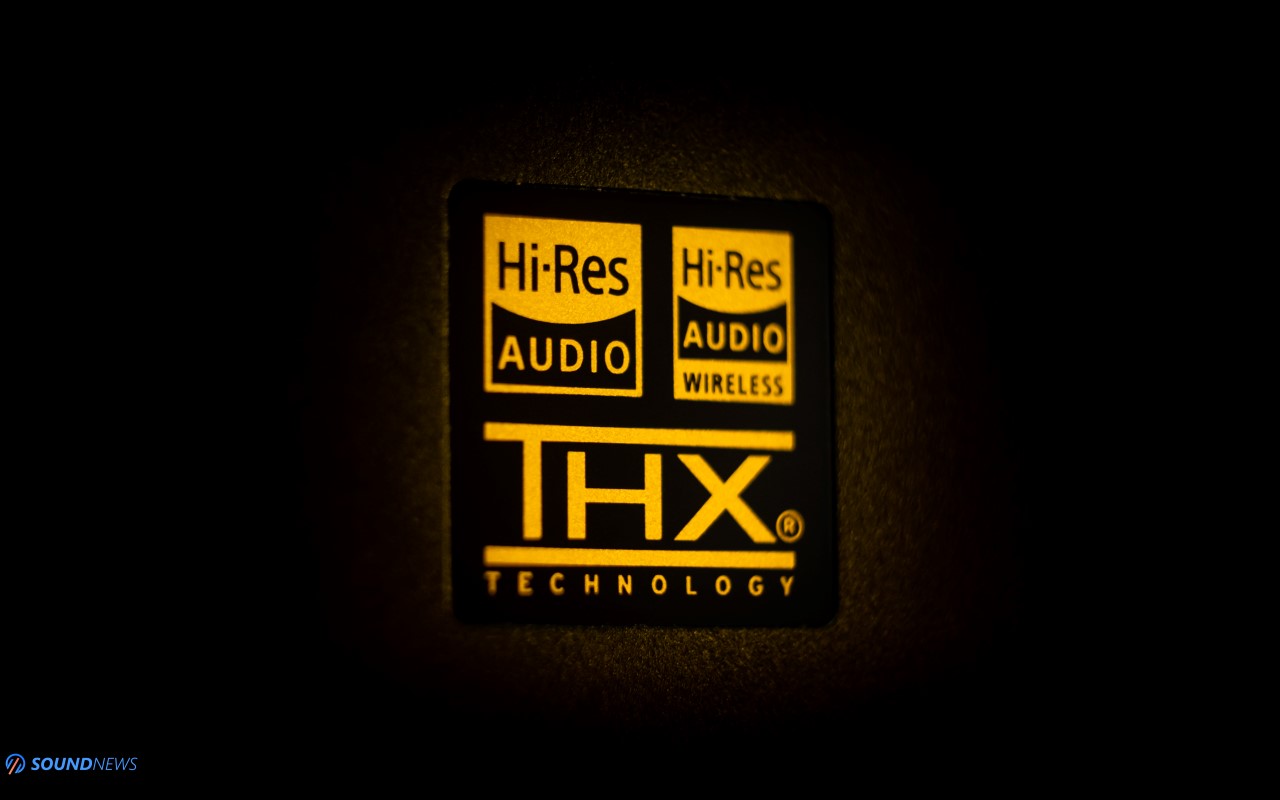
C. Treble
I think I’ve arrived at one of the cleanest, transparent and outlined treble performances that I’ve experience below $1K. There’s a crazy amount of detail coming forward, top octave was defined and strong, having its chip up all the time. K9 PRO got an immaculate treble performance, putting just a higher accent on the leading edges and contour of the notes. In the first three days or so, K9 PRO was a little on the brighter side, but a week later, it’s no longer the case. Treble heads will definitely enjoy this one, as it got quantity and quality on a high level. I can swallow bright sounding amplifiers, but I don’t believe that’s the case with the K9 PRO. Putting smooth and warm sounding op-amps at its I/V, Buffer and LPF stages counterbalanced some issues I had with entry-level THX-AAA amps. There is just a glimpse of natural textures, a small trace that removes brightness and listening fatigue short term, but it might tire your down long term.
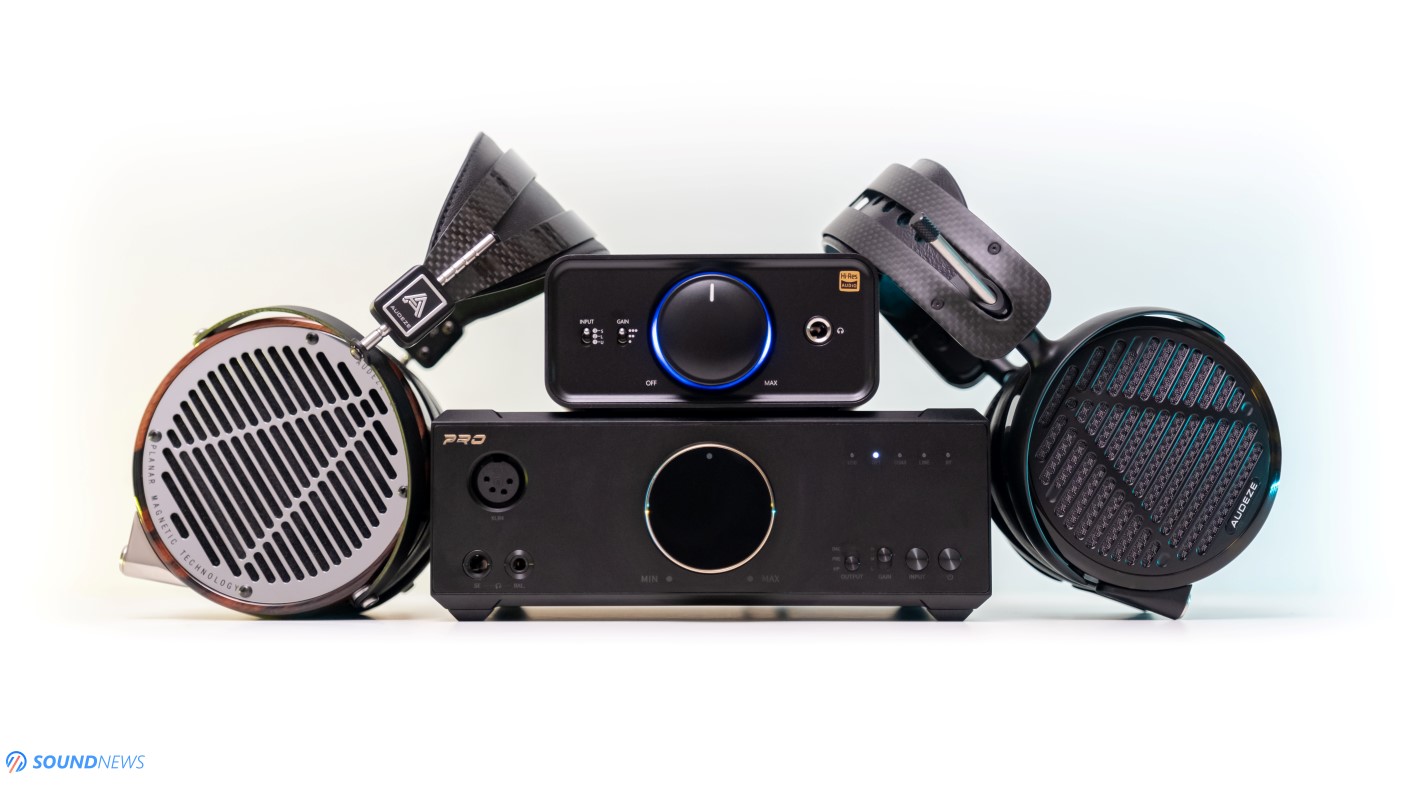
VIII. Bluetooth
I have tested Qualcomm’s flagship QCC5124 and CSR8675 Bluetooth receivers multiple times now, not only on FiiO products, but on many portable and desktop units of different manufacturers and all of them performed quite well. However, desktop units that used an external antenna had a (much) better signal reception and a wider Bluetooth coverage, since that antenna works as a powerful signal booster. My smartphone natively supports LDAC and AptX-HD data streams, it’s a Bluetooth 5.0 enabled device too, so I will be squeezing the best K9 PRO is capable of.
Unsurprisingly, it has a rock-solid Bluetooth performance, as two concrete walls didn’t pose a slightest problem, even from a substantial distance. Several meters away and the signal was still going strong and only when I moved to the balcony, with four concrete walls in between at about fifteen meters away, it started stuttering and losing a few beats here and there. I’ve tried as hard as I could in an open space, but I never lost its signal. Bluetooth connection was strong and it worked flawlessly in my case.
Sending music from my smartphone that was connected to streaming services as Qobuz and Tidal worked as a charm and LDAC codec sounded almost indistinguishable to its USB connection. Bottom line is that K9 PRO worked well with all Bluetooth senders, but it performed better with those that support BT 5.0 and LDAC codecs. I didn’t enjoy its sound as much via an iPhone (AAC codec), as it felt like listening to low-bitrate mp3 files and it my case, it worked better with Android devices that are supporting the latest codecs.

My Conclusion
Here’s the beautiful truth: plenty of all-in-one devices and DAC/Amp combos are coming and going around here, but there wasn’t a unit (or stack) that impressed me as much as K9 PRO did with my entire headphone collection. Be it Topping DX7 PRO, D30 Pro with A30 Pro, Keces S3, SMSL SU-9 with SH-9, M500, xDuoo XA-10, Aune S6 Pro, X1s GT or the Matrix Mini-i 3 PRO…K9 PRO outperformed them at simplest tasks as decoding zeroes and ones and amplifying the analog signal, without damaging the final outcome. I’m not trying to hype the damn thing, only spreading the truth about its close to perfect performance. In my case and with my particular headphones, K9 PRO outplayed before mentioned units as there’s no other way to describe its performance.
Finally, there’s an all-in-one unit that wouldn’t be holding back detail retrieval, fast transients, frequency response and wouldn’t rise distortion and noise to alarming levels. Besides its medium sized soundstage and limited power delivery with the Hifiman Susvara, I cannot complain about anything else. K9 PRO is a well-crafted, well-thought and great sounding unit, that will be putting to shame pricier units, several of which I just mentioned above. K9 PRO fully justified its price point, so much so that I find it dirt cheap considering its sky-high price to performance ratio.
There are several quirks in place, but those are minor and less important below the $1K mark, deserving our highest Gold Award and a round of applause.

FiiO K9 PRO ESS was kindly provided by FiiO, you can purchase it from their AliExpress Store, you can get it from their worldwide distributors right here, or you get it from Apos Audio right here. (Apos offers free shipping in the USA and Canada, free 45-day returns in case you don’t like it, an extra year of warranty and they will price match the lowest price you can find online).
If you get one, please come back and leave a comment below, I’m curious to know how it performs with your entire headphone collection.
PROS:
- Safe packaging and a great unboxing experience
- Immaculate build quality
- I’m digging its stealth look and small footprint
- Feature packed to its teeth
- Honest, linear and transparent sounding
- Extremely detailed sounding
- Good tonality/timbre versus all other THX-AAA equipped devices
- Good layering and depth, excellent imaging
- Transient response is crazy good, there’s speed and a serious punch too
- Plenty of power is being provided, could drive almost anything out there
- Dead-silent with IEMs on any headphone jack or gain position
- Extended frequency response, without rounding off frequency extremes
- Offers a wide Bluetooth coverage and codec support (LDAC and AptX Adaptive rocks!)
- Probably the best All-In-One combo below $1K, an incredible value
CONS:
- Sharp leading edges, tiresome in long listening sessions
- Soundstage is not the widest
ASSOCIATED EQUIPMENT:
- DACs: FiiO K9 PRO ESS, K5 PRO ESS, Denafrips Terminator Plus, Rockna Wavelight, Audiobyte HydraVox & HydraZap, Gold Note DS-10 Plus & PSU-10 EVO, SMSL VMV D2, Singxer SDA-6 PRO, Gustard X18
- DAPs: Hiby RS6, FiiO M17, M11 Plus ESS, Shanling M8
- Headphone Amps: Ferrum OOR + Hypsos, Flux Labs Acoustic Volot, Enleum AMP-23R, Burson Audio Soloist GT, Trafomatic Primavera, several Topping, SMSL & Gustard units
- Preamps: Musician Monoceros, Benchmark HPA4, Topping PRE90
- Power Amps: KECES S300, Benchmark AHB2 (x2), SMSL SA400, Burson Timekeeper 3i
- IEMs: FiiO FH9, FH7, FA9, FA7S, FD7, Meze Rai Penta, LittleDot Cu KIS, Kinera Skuld, 7Hz Timeless & others
- Portable headphones: Sony WH1000-XM4, Sennheiser Momentum 2, Meze 99 Classics
- Full-sized headphones: Hifiman Susvara, HE1000SE, Arya Stealth, Sundara, Audeze LCD-5, LCD-4, Erzetich Phobos V2021, Phobos V2018, Erzetich Mania, Kennerton Rognir, Magni, Gjallarhorn, Vali, M12S, Apos Caspian, Sendy Peacock, Apollo, Aiva & others
- Loudspeakers: KEF Reference 3, Sound Of Eden Crescendo UNO
- Interconnects: QED Reference (x2), Topping TCX1 (x2)
- Speaker cables: Kimber PR8, Audioquest Type4
- Power Cables: Isotek EVO3 Premier (x3), iFi Audio SupaNova (x2)
- Balanced Isolation Power Conditioners: PLiXiR Elite BAC1500 (stereo setup), Elite BAC400 (headphone setup)
